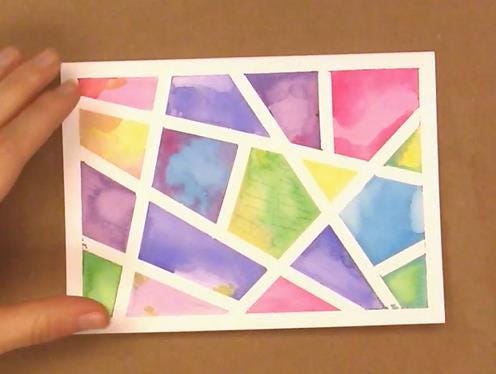Creative Explorations Vol #22: Resist
A sketchbook/art journal prompt to support your art and creative practice.

Creative Explorations are themed around a prompt that you can explore in your own art/creative practice over the coming weeks. Prompts will be sent out on the first Friday of every month. I hope this month’s prompt sparks your creativity!
My 100 day project — 100 days of art journaling — continues to go strong. I have an unbroken streak of 34 days of art journaling {a first for me} and it has been such a fulfilling and generative practice!
There have been small moments of resistance, but having our shared chat space and a small mindset shift have helped to collapse that resistance.
So this month, I thought we could explore RESIST in our sketchbooks.
It’s a simple technique that can yield some interesting results. And there’s a personal, political, and/or systemic aspect to it as well in the form of resistance art. Let’s explore both this month.
Resources + ideas
Collage papers and backgrounds: Use a simple resist technique to make interesting collage papers and backgrounds. You can use wax crayons, beeswax, PVA glue {and even a glue stick!} and Vaseline to create resists. Scribble with the crayon, draw organic shapes or patterns with a bottle of glue or lightly dab some Vaseline for an organic effect. Check out this video for a Vaseline resist tutorial and this one for crayon resists.
Tip: if you’re using acrylic paints, use fluid acrylics or to thin down your heavy body acrylics with some water when you go over your resist.
Dreamy layers: Oil pastels make for an excellent resist too. Layer them with acrylics and then scratch into the surface to reveal the pastel underneath. You can paint with heavy-bodied acrylics and layer over them with inks. The more layers of oil pastels and acrylics you add, the dreamier the effects.
Tip: Don’t use your best brushes with this technique or you will ruin them! Use a mangy old brush or even an old credit card or key card to layer acrylics over oil pastels.
Inky lettering: Once you’ve practiced with wax resist techniques, try your hand at some inky lettering. Use your wax crayons to write a word or quote — this is your resist layer. Come in with some watercolors, inks, or watered-down acrylics over the crayon layer. You can try dripping inks or paints, or use a straw to blow it in different directions.
Taped lines: Try creating geometric designs using tape. Try this: Use masking tape to create a design in your sketchbook, and then apply paint directly to the surface. The taped areas will act as a resist, and remain the color of the paper. Once you’ve finished painting, gently peel off the masking tape.

Tip: If you want to take this further, you can doodle, hand letter, stamp, stencil, or even collage into the colored areas. Or outline the color blocks and doodle or write into the blank areas!
Layered resists: Kick the experimentation up a notch by layering on resists. This will give your painting depth and texture and create some really interesting, unique effects. Watch this multi-layered resist technique on silk, or read this step-by-step process from the Denver Art Museum,
Resistance art: While we’ve looked at the resist technique so far, resist {or resistance} is also personal, political, and/or systemic. We’ve all seen examples of powerful hand painted signs from protest demonstrations; paintings and illustrations that focus on peace and liberation; and photography and poetry that capture the spirit of rebellion, freedom, and equality.
We can see resistance art through the ages, and art that relates to one of the most pressing issues of our times. And then there are times when *all of this* weighs so heavily on us that we don’t know what to do with all of our big emotions. That is when we create art. I released this art video right at the start of the pandemic and soon after my city, Delhi, was hit by religious riots. More than a “protest piece”, it was a painting to send out a current of love and peace into the collective unconscious.
Since then, I’ve painted a few pieces in my journals to express my anguish and my dissent. I’ve always found it cathartic to use art to release my emotions around events that are too big for me as an individual to address. Maybe it will help you too? Give it a try this month!
And always1:
Our week 6 chat space is open!
I love the cozy intimacy of our weekly chat space, seeing your wonderful work, and cheering you on your art journeys! I can’t wait to see more of your beautiful creations, so come on over and share your art!
The chat is only open to subscribers, making it a cozy, intimate way to connect with fellow artists. I’d love to see you there! xx
I also look forward to seeing your take on this prompt! You can email your finished pieces to me on shinjinim@substack.com or share them on Notes if you use the Substack app. If you share on Instagram, tag me @moderngypsy.in
Like this prompt? Share it with your friends and invite them into our virtual studio. If you’re on the Substack app, please consider restacking this post.
At this point, I don’t think I need to say this, but I will anyway: Free Palestine doesn’t mean that I’m antisemitic. I am not. There are many Jewish organizations that have unequivocally called what’s happening in Palestine a genocide and called for the Israeli government to end this war. What I am is anti-genocide, anti-war, anti-settler-colonialism. What’s happening in Palestine is genocide. Never again means never again for everyone.






